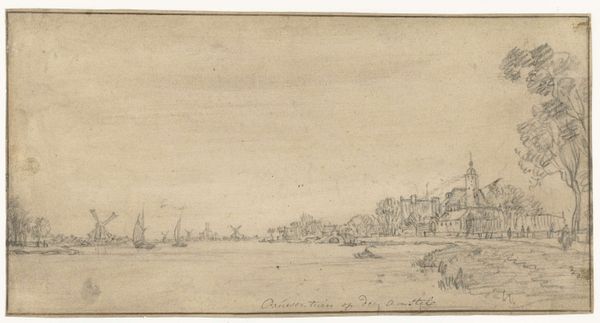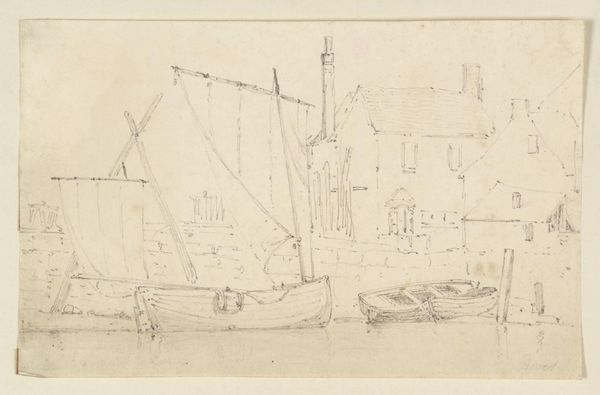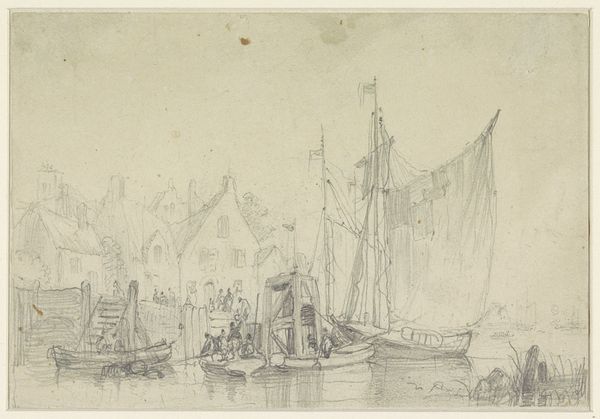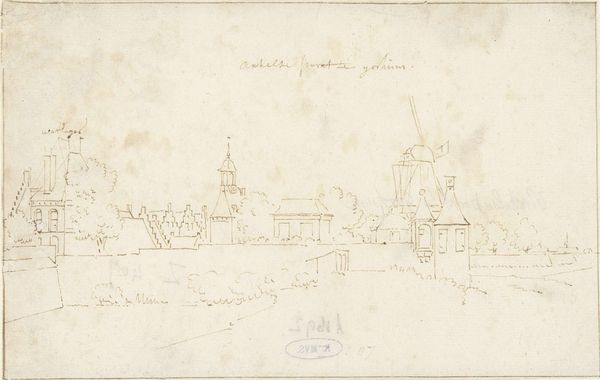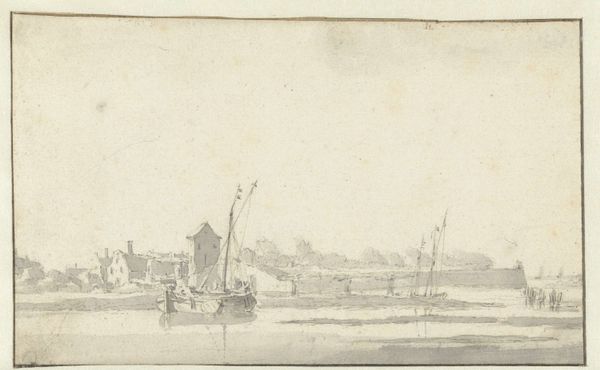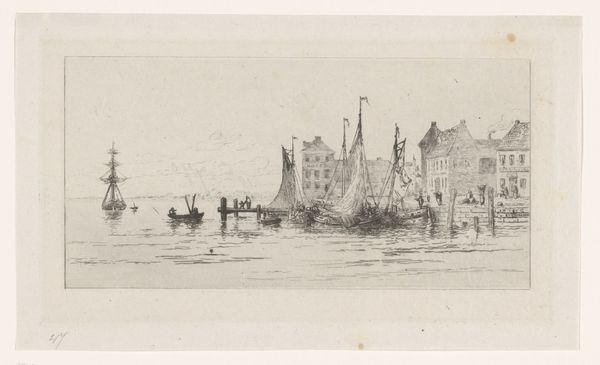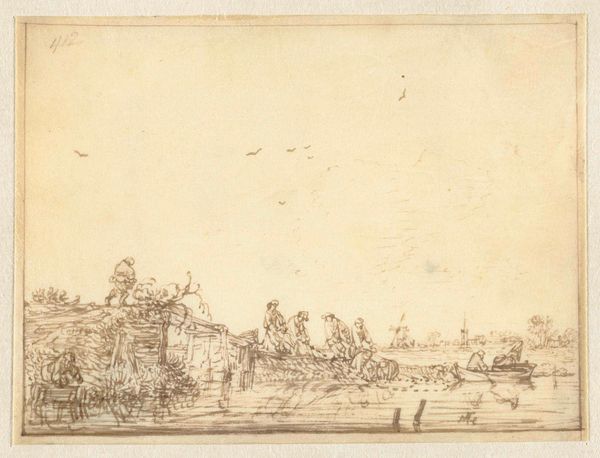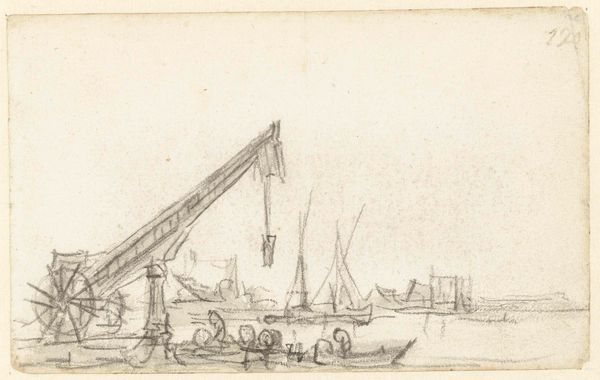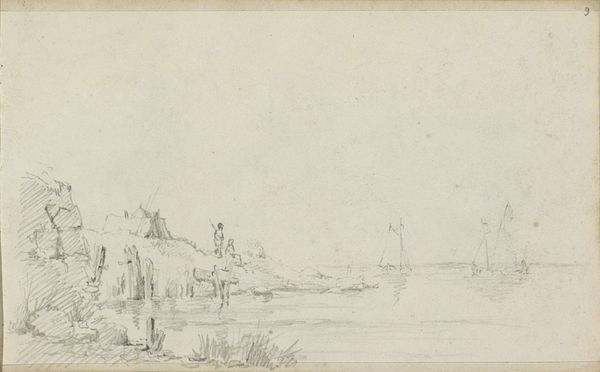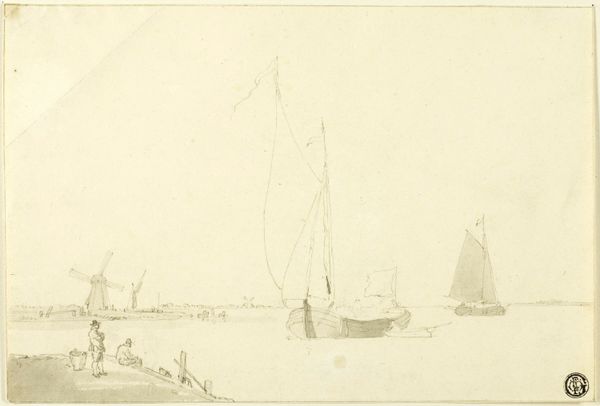
drawing, pencil
#
drawing
#
dutch-golden-age
#
landscape
#
pencil
#
cityscape
#
realism
Dimensions: height 99 mm, width 218 mm
Copyright: Rijks Museum: Open Domain
Curator: What a delicately rendered scene. This pencil drawing, titled "Gezicht op een stad aan het water"—"View of a City on the Water"—was sketched by Aelbert Cuyp sometime between 1630 and 1691. It now resides in the Rijksmuseum collection. Editor: It’s immediately evocative, a study in tranquility. The softness of the pencil strokes creates a dreamlike atmosphere. The light seems almost tangible, doesn’t it? Curator: Yes, it certainly captures the shimmering quality of light on water. It's interesting to consider Cuyp’s artistic process. Was this a preparatory sketch for a larger painting? Or a finished work in its own right, intended for collectors who valued draftsmanship? The materials used, simple graphite on paper, speak volumes about accessibility and the increasing market for art. Editor: The composition, too, speaks to the broader context. The cityscape is presented almost as a stage, with each building playing a symbolic role. The windmills, for instance, stand as symbols of Dutch ingenuity and prosperity, powered by nature but shaped by human intervention. The boats, too, are more than mere vessels; they represent trade, exploration, and the constant flow of people and ideas. Curator: Precisely. And if we delve deeper into the materiality, consider the Dutch paper mills during Cuyp’s time. The ready availability of high-quality paper undoubtedly facilitated artistic experimentation and production on a scale previously unseen. This connects directly to how artists built their careers and interacted with their patrons. Editor: There’s a beautiful balance between the familiar and the aspirational here. The calmness suggests stability and prosperity, yet those boats hint at further horizons, both literally and metaphorically. Even the choice to render it so minimally gives it a timeless, universal feel. This cityscape represents not just a place but a state of mind. Curator: So well put. It truly provides a rich glimpse into not only the artistic practice of Cuyp, but also a perspective on the means of artistic creation and the markets supporting its dispersal at the time. Editor: Indeed. A drawing that quietly whispers of far more than it overtly displays.
Comments
No comments
Be the first to comment and join the conversation on the ultimate creative platform.
